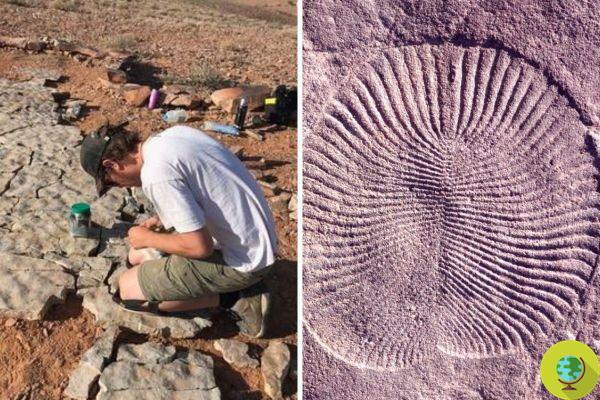Today's humans share genes with headless ocean creatures that lived half a billion years ago
He is about to end up run over, his mother saves himWe are more like animals than we imagine. New research conducted by scientists at the University of California Riverside has found "Fossils" in Human DNA inherited from animals that lived over 550 million years ago.
We feel superior to them, we exploit them, but we are related and we resemble animals more than we have assumed so far. In fact, the new research reveals that we are even similar to the first animals that lived on Earth, the ancestors of molluscs. Ocean creatures that lived 555 million years ago in the Ediacaran period share genes with today's animals, including humans.
“None of them had heads or skeletons. Many of them probably looked like three-dimensional bathmats at the bottom of the sea, round disks that freeze, ”said Mary Droser, professor of geology at UCR. "These animals are so strange and so different, it's hard to assign them to modern categories of living organisms just by looking at them, and we can't extract their DNA."
However, the well-preserved fossil record allowed Droser and the study's first author, UCR graduate student Scott Evans, to link the animals' appearance and likely behaviors to agenetic analysis of living beings today. Their research was published in the journal Proceedings of the Royal Society B.
For their analysis, the researchers considered four representative animals of the more than 40 species identified from the Ediacaran era. These creatures ranged in size from a few millimeters to nearly a meter in length. Four were those examined: Kimberella, Dickinsonia, Tribrachidio and Ikaria.
Le Kimberella they were teardrop-shaped with a wide, rounded end and a narrow one that probably scrapped the sea floor to look for food with some sort of proboscis. There Dickinsonia it was characterized by an oval shape with a series of raised bands on the surface. There was the Tribrachidio who spent his entire life immobilized on the bottom of the sea. The analysis also examined the Ikaria, recently discovered animals. The latter were about the size and shape of a grain of rice.

©Droser Lab/UCR
These were multicellular organisms that had another surprising feature: they were capable of repair damaged body parts through a process known as apoptosis. Here the similarities with humans begin. The genes behind them apoptosis they are the same key elements of the human immune system, capable of eliminating cells infected with viruses and tumors.
"Our work is a way to put these animals on the tree of life," Droser said. "And it shows that they are genetically linked to modern animals and to us."
Similar to headless animals that lived half a billion years ago.
Sources of reference: UCR, Proceedings of the Royal Society B
READ also:
- Our brains got bigger after we made the big animals go extinct. I study
- Sardinians have the oldest DNA in Europe. It dates back to 7 thousand years ago and tells the story of prehistoric times
- Neanderthal mother, father Denisovan: discovered the first hybrid hominid in human history


























